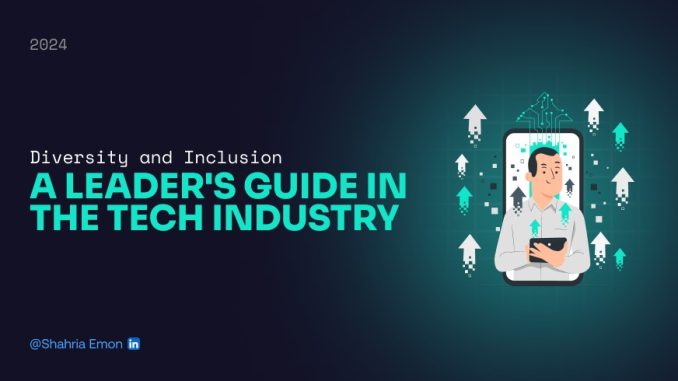
The tech industry has long been associated with innovation, disruption, and rapid growth. Yet for many years, it also carried a reputation for being insular, homogeneous, and slow to embrace diversity. That narrative is beginning to shift. Across startups and established enterprises alike, there is a growing recognition that inclusion is not just a moral imperative—it’s a business advantage. The movement toward a more inclusive tech ecosystem is gaining momentum, driven by a combination of grassroots advocacy, corporate accountability, and evolving consumer expectations. This transformation is reshaping how companies hire, build products, and engage with the communities they serve.
One of the most visible changes is in recruitment and talent development. Companies are rethinking how they source candidates, moving beyond traditional pipelines that often favor a narrow set of backgrounds. Bootcamps, community colleges, and non-traditional training programs are now seen as viable pathways into tech roles. This shift acknowledges that talent is not confined to elite universities or established networks. By broadening access, companies tap into a richer pool of perspectives and experiences. For example, initiatives aimed at training women, people of color, and individuals from underserved regions in coding and data science are helping to close longstanding gaps. These programs don’t just teach technical skills—they build confidence, foster mentorship, and create pathways to leadership.
Internally, many organizations are investing in inclusive cultures that go beyond surface-level diversity. This means creating environments where all employees feel valued, heard, and empowered to contribute. Inclusive design principles are being applied not only to products but also to workplace policies. Flexible work arrangements, mental health support, and employee resource groups are becoming standard features of progressive tech companies. These efforts are not just about retention—they’re about unleashing potential. When people feel safe to bring their full selves to work, creativity flourishes and collaboration deepens. The result is better products, stronger teams, and more resilient organizations.
Leadership representation is another area where progress is being made, albeit slowly. The presence of diverse voices at the executive level sends a powerful message about what is possible. It also influences decision-making in ways that ripple throughout the company. Leaders who understand the lived experiences of marginalized groups are more likely to prioritize inclusive practices, challenge bias, and advocate for equitable outcomes. Some firms are setting measurable goals for diversity in leadership and tying them to performance reviews or compensation. While these measures may seem bold, they reflect a growing understanding that inclusion must be embedded in strategy, not treated as an afterthought.
Product development is also evolving in response to inclusion. Tech companies are realizing that building for a global audience requires a global mindset. This means considering how different users interact with technology, what barriers they face, and what needs remain unmet. Accessibility features, language options, and culturally sensitive design are no longer niche considerations—they’re central to user experience. For instance, voice recognition systems are being trained on a wider range of accents and dialects to ensure accuracy across populations. AI models are being audited for bias to prevent discriminatory outcomes. These efforts not only improve functionality but also build trust with users who have historically been overlooked or underserved.
The rise of inclusive tech is also being shaped by external forces. Investors, regulators, and consumers are demanding greater transparency and accountability. ESG metrics now include diversity and inclusion as key indicators of corporate health. Social media amplifies voices that challenge exclusion and celebrate progress. In this environment, companies that fail to prioritize inclusion risk reputational damage and missed opportunities. Conversely, those that lead with integrity and openness are rewarded with loyalty, innovation, and market relevance. Inclusion is no longer a soft metric—it’s a strategic differentiator.
Education and community engagement are playing a vital role in sustaining this momentum. Tech firms are partnering with schools, nonprofits, and local organizations to build inclusive pipelines from an early age. These collaborations help demystify technology, spark curiosity, and provide resources to those who might otherwise be left behind. They also reinforce the idea that inclusion is not a one-time initiative but a long-term commitment. By investing in future generations, companies are not only shaping their talent pool—they’re shaping the values of the industry itself.
Despite these advances, challenges remain. Inclusion is complex, and progress is uneven. Tokenism, unconscious bias, and structural inequities still exist. The work requires humility, persistence, and a willingness to listen. It also requires data—clear metrics that track progress and highlight areas for improvement. Companies must be willing to confront uncomfortable truths and make meaningful changes. This is not easy, but it is necessary. The tech industry has the tools, the talent, and the influence to lead by example. The question is whether it will continue to do so with courage and conviction.
Ultimately, the journey toward a more inclusive tech industry is about expanding the definition of who belongs. It’s about recognizing that innovation thrives when diverse minds come together to solve complex problems. It’s about building systems that reflect the richness of human experience and serve the needs of all. For business leaders, this is not just a challenge—it’s an invitation. An invitation to build companies that are not only successful but also just. An invitation to shape a future where technology uplifts, empowers, and includes. And in accepting that invitation, the industry moves closer to fulfilling its promise—not just as a driver of progress, but as a force for equity.